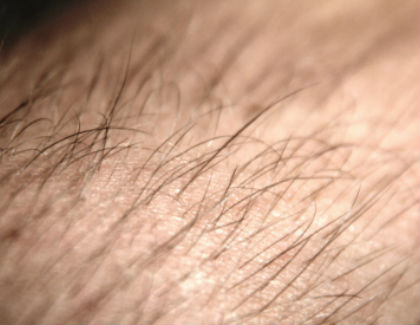
Treatment Options
If you are bothered by thinning hair or balding, hair transplantation can significantly improve your appearance and self-confidence.
- Hair transplantation is a surgical technique that moves individual hair follicles from a part of the body called the ‘donor site’ to bald or balding part of the body known as the ‘recipient site’. It is primarily used to treat male pattern baldness. In this minimally invasive procedure, grafts containing hair follicles that are genetically resistant to balding are transplanted to the bald scalp. It can also be used to restore eyelashes, eyebrows, beard hair, chest hair, pubic hair and to fill in scars caused by accidents or surgery such as face-lifts and previous hair transplants.
- Our hair naturally grows in groupings of 1 to 4 hairs, today’s most advanced techniques harvest and transplant these naturally occurring 1–4 hair “follicular units” in their natural groupings. Thus modern hair transplantation can achieve a natural appearance by mimicking nature hair for hair.
At an initial consultation, we analyze the patient’s scalp, discuss patient’s preferences and expectations, and advises on the best approach (e.g. single vs. multiple sessions) and what results might reasonably be expected.
Pre-operative analysis of actual existing density of hair is done,so that postoperative results of newly transplanted hair grafts can be accurately assessed. Some patients may benefit with preoperative topical minoxidil application and vitamins.
For several days prior to surgery the patient refrains from using any medicines which might result in intraoperative bleeding and resultant poor “take” of the grafts, like aspirin or some multivitamins. Alcohol and smoking can contribute to poor graft survival.
Types of Hair Transplant Surgery
There are a number of applications for Hair Transplant Surgery, including:
- Androgenetic Alopecia
- Eyebrow Transplant
- Frontal Hair Line Lowering or Reconstruction (naturally high hairlines without an existing hair loss condition)
Surgical technique
The two main hair transplant procedures you can choose from are: Follicular Unit Transplantation (FUT) and Follicular Unit Extraction (FUE). The main difference between the two procedures is the method of harvesting the hair.
- FUT, also known as the ‘strip method’, is where the surgeon will remove a strip of skin from the back of your head containing a number of hair follicles and graft them to the affected area.This method helps in procuring more number of grafts in a session, so preferable when more grafts are needed in a single session.
- FUE is a more time consuming procedure because individual follicles are extracted from the donor area one-by-one and then transplanted to the affected area. This is becoming preferable mode of transplants by patients as theres no stitches involved.
Transplant operations are performed on an outpatient basis, with mild sedation (optional) and injected local anesthesia, which typically last about six hours. The scalp is shampooed and then treated with an antibacterial agent prior to the donor scalp being harvested.
Regardless of which donor harvesting technique is employed, proper extraction of the hair follicle is paramount to ensure the viability of the transplanted hair and avoid transaction, the cutting of the hair shaft from the hair follicle. Hair follicles grow at a slight angle to the skin’s surface, which means that regardless of technique transplant tissue must be removed with a corresponding angle and not perpendicular to the surface.
Within two to three weeks after surgery, the transplanted hair will start to fall out, but after two to three months new hair will begin to grow from the moved follicles. The patient’s hair will grow normally, and continue to thicken through the next six to nine months. Any subsequent hair loss is likely to be only from untreated areas.
Post operative antibiotics and pain killers are prescribed for 5-7 days. The local swelling and pain subside within a week.
Are hair transplants safe?
YES. When you are in the hands of a hair restoration specialist, hair transplant procedures are completely safe. The success of the treatment and how natural the hair transplant appears depends very much on the skill of the aesthetic surgeon.
Are these hair permanent?
Yes. These hair are resistant to hair loss.
Do these hair grow?
These hairs are like your normal hairs. They grow like other hairs and also need a hair cut like other hair.
